Otley History – When the Irish and Elephants Arrived
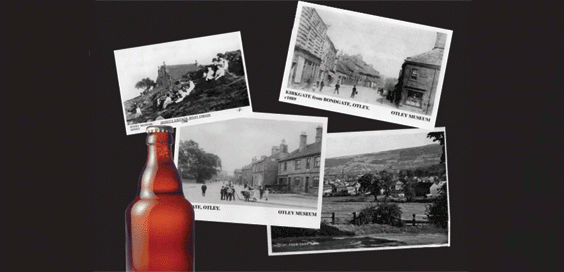
Otley-born Keith Spence looks back on the colourful history of his birthplace – and finds a few surprises…
The Irish invasion, the Gunpowder Plot, the printing press that rocked the world, John Wesley’s famous horse, the Chippendale connection and how the sight of the Chevin influenced one of the world’s most famous paintings – these are just a few of the historical gems I’ll be highlighting as I look back on the remarkable town which, by chance, happens to be my birthplace.
Although I was born in Otley, I never actually resided there. At the time my family was living in Harrogate, a place I have spent most of my life. Probably because my parents’ families lived there, my mother was whisked to the town, gave birth, and came back to Harrogate within a few days and resumed normal life in the spa town. As a lad I have fond memories of visiting relations and experiencing a different way of life. Gone were the wide open spaces of the town I was growing up in, to be replaced by the shadow of the Chevin and the dank, tightly-knit, grey-stone terrace streets.
But it is not until now, when I look back, that I realise how impossible it is in so short a space to elaborate on the town’s historical details and customs, some of which have a vague connection with my family. I’ll start with the Irish invasion. In the 1840s people fled Ireland to escape the ravages of the potato famine and many settled in Otley in an area now known as the Irish Fields.
“Agent for Fawkes”
It is difficult to image the plight of these poverty-stricken, penniless people. Their only solace is found in their fellow Catholics living in the town. They greatly swelled the ranks of the Otley Catholic population who at that time had to do a 15-mile round trip to Middleton Lodge in Ilkley to hear Mass. As a result Thomas Constable, a solicitor and agent for the Fawkes family of Farnley Hall, built a Catholic church in the grounds of the Manor House, which itself was erected in 1792 near the former medieval palace of the Archbishop of York.
And so where is my family connection? Well my mother, a staunch Methodist, moves into the Manor House after it is turned into apartments when the last descendant of the Constable family left it. Sitting in her lounge with a sweeping vista of the Market Cross and the White House resting demurely on the Chevin, she is proud of the fact that she is enjoying the home comforts once shared by Lady Mowbray, Thomas Constable’s daughter.
“Pot shots at pigeons”
It is not a pleasure shared at the time by the eccentric parish priest. Dead now, he appears to resent the intrusion of the new tenants into the Catholic confines of his parish church. In fact, they are not his only concern. There are tenants’ stories of him taking pot shots at the pigeons who dare to invade the church’s air space. And, of course, there is Guy Fawkes. His father is a descendant of the Fawkes family in Farnley. They cause quite a stir when he was caught in the cellars of the Houses of Parliament with explosives. Notorious for his involvement in the Gunpowder Plot of 1605, an attempt by a group of religious conspirators to kill James 1, his family and most of the aristocracy by blowing up the House of Lords.
Otley dates from before Roman times and belonged to the Archbishop of York. The Romans occupied the region when they marched north to create York AD712 and left place names that prove the Celts’ long presence. An example of their influence is the Chevin, derived from the Welsh name Cefn, meaning a ridge.
“Shrouded in mystery”
Otley is rightly proud of its associations with famous men. It was the Chevin that made a lasting impression on one of them. The place inspired a world-famous painting. JMW Turner, the famed artist, visited the town in 1797, aged 22. He had been commissioned to paint water colours of the area. Turner was besotted with the town and returned time and time again. He was a great friend of Walter Ramsden Fawkes. It was while staying at Farnley Hall that a storm over the Chevin inspired the backdrop of his major painting, ‘Hannibal Crossing the Alps’. His imagination marching at the head of an army of elephants out across the rocky sweeps.
Thomas Chippendale, the famous furniture maker, also had Otley connections. Although his early years are shrouded in mystery, he is believed to have been born in the town in 1718. He was the son of a carpenter, and his statue stands in the town next to the old Prince Henry Grammar School in Manor Square. He used to attend the school. In 1754 Chippendale published his masterful collection, Gentleman and Cabinet-Makers Directory. It was a compilation of fashionable English furniture design. It sealed his enduring legacy. It shows his gift of adapting existing design styles to the fashion of the mid 18th century. His influence meant that Chippendale is often applied to the mid-18th century furniture as a whole. Now, Harewood House hosts the finest collection of Chippendale furniture in Britain.
So what about John Wesley’s horse? The famous Methodist preacher was a frequent visitor to the town in the 18th century. His horse died in the town and is buried in the grounds of the parish church. Its grave has an unusual Toblerone-shaped stone, known as the “Donkey Stone”. One of the main roads is Wesley Street.
“Permanent place in the history books”
At the start of the 19th century Otley had a population of just over 2000. But this had risen to 9000 by the end of the century. This is mainly down to connections with the leather, paper and printing machine industries. They brought prosperity to the town in the industrial revolution. The names Dawson, Payne and Elliot are synonymous with the name of Otley. Newspapers throughout the world are soon printed on their famous presses.
But it was the Wharfedale machine that has earned Otley a permanent place in the history books. It was a revolutionary new printing press. It is invented and built in the mid-19th century by Dawson, Payne and Elliot. One of the originals is now in the Otley Museum, although thousands have since been built. The inventive genius of David Payne is responsible for the major breakthrough in printing. He invented a stop-cylinder machine which could deliver print without having to be stopped. The revolutionary machine has a shattering impact on the industry. It dominates world markets up to modern times. In 1965, an order is placed with Dawson Payne and Elliott for 28 of the machines to print the Koran in Pakistan.
No history of Otley would be complete without reference to its pubs. In fact the Roundheads were drinking the town dry on the night before the Battle of Marston Moor. Prince Rupert’s cavalry horses were out to grass on the slopes of the Chevin. Otley used to hold the record of the most pubs per square mile of land space in Britain. Over the years many of them have closed, but it still boasts 21. Who said there is no link between alcohol and creativity?
Postcards available from Otley Museum
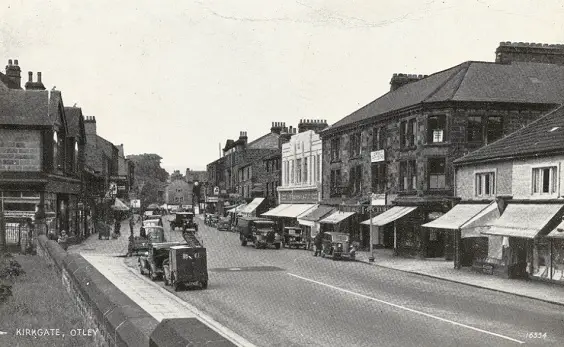
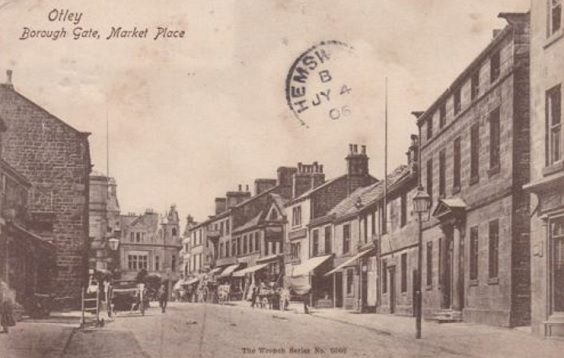
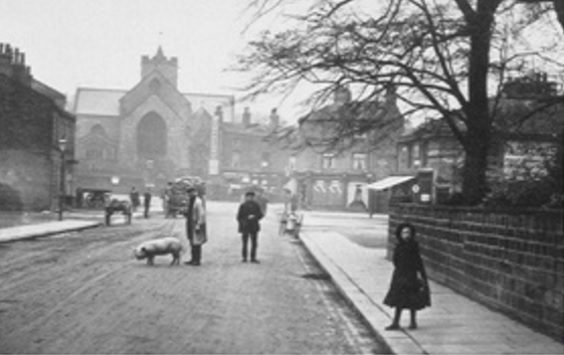
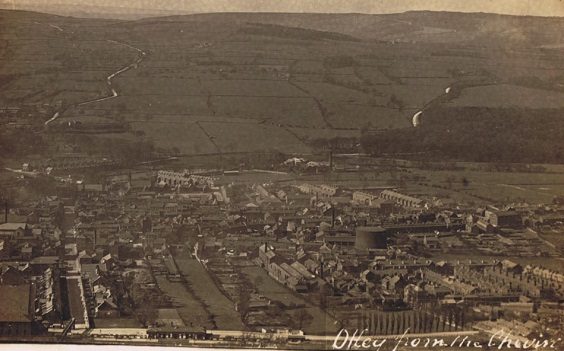
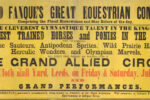
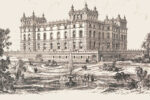
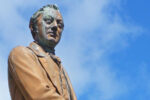
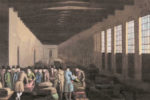






Hello, I am trying to locate the Irish Fields in Otley, some say it is to the right as you get towards the end of Ings Lane coming in from Pool Road, others say it is further on to the east of what is now the Peterhouse Drive road, they are very close together so perhaps they are both the correct location and the fields were in fact spread over the general area..